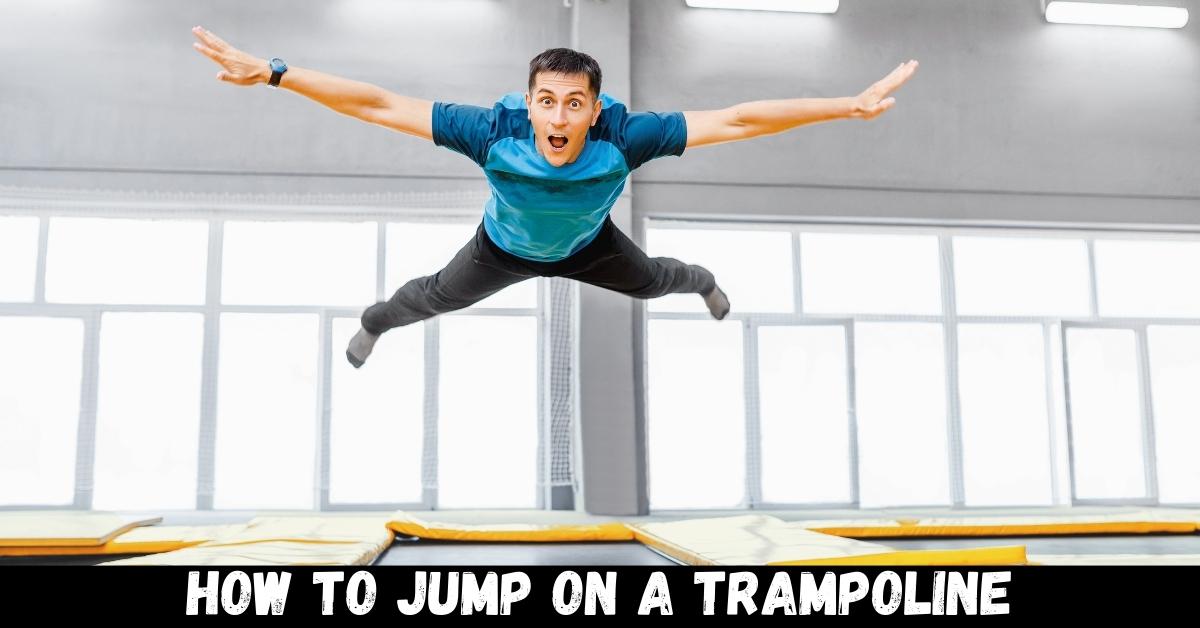Do you know how to jump on a trampoline? Jumping on a trampoline is an exhilarating and fun experience that can bring out our inner child.
As I step onto the bouncy surface, I can feel the anticipation building. I take a moment to ensure the area around the trampoline is clear and secure. With a light bounce, I test the trampoline’s responsiveness and get a feel for its rhythm.
As I jump, I bend my knees slightly, keeping my body upright and engaged. I use my arms for balance and stability, feeling the air rush past me with each jump.
I experiment with different variations, tucking my knees to my chest or extending my legs straight out in front, adding flair and excitement to my jumps.
I’m mindful of the safety guidelines, avoiding double bouncing and maintaining a safe distance from others. As I gradually wind down, I reduce the intensity of my jumps, feeling a sense of satisfaction and accomplishment.
Jumping on a trampoline is not just about physical activity but also about letting go, having fun, and experiencing the joy of being airborne.
How to Jump on a Trampoline: Jumping on a trampoline is a thrilling experience. You can enjoy the exhilaration of bouncing, flipping, and soaring through the air with proper technique and safety measures. Get ready for a gravity-defying adventure!
How to Jump on a Trampoline? Some Tips

If you want to become better at jumping higher on a trampoline, here are some useful tips for you to follow. These tips will help you improve your jumping skills and achieve greater heights while bouncing on the trampoline.
Master the Art of Trampoline Jumping:
Mastering high jumps on a trampoline requires practice, skill, and a solid foundation of fundamental jumps. Before attempting higher jumps, starting with the basic jumps is essential to develop an understanding of the trampoline’s bounce and improve your balance during jumps and landings.
- Tuck Jumps: Begin with tuck jumps, which involve bringing your knees up towards your chest while in mid-air. Start with small tuck jumps and gradually increase the height and tuck as you gain confidence and control.
- Pike Jumps: Once comfortable with tuck jumps, progress to pike jumps. Keep your legs extended straight in front of you in a pike jump while maintaining a straight back. Focus on engaging your core and stretching your body as you jump.
- Straddle Jumps: Straddle jumps involve jumping while spreading your legs apart in a straddle position. As you jump, keep your legs straight and open them as wide as possible. Concentrate on maintaining good form and control throughout the jump.
- Half or Full Jumps: Once you have mastered the tuck, pike, and straddle jumps, you can progress to half or full jumps. In a half jump, bend your knees and bring them up towards your chest, while in a full jump, extend your body fully in mid-air.
These jumps require more power and height, so generating momentum by using your leg muscles effectively is crucial.
As you practice these fundamental jumps, focus on proper technique, balance, and body control. Pay attention to your timing, rhythm, and landing technique to ensure a safe and controlled experience.
Achieve a Bouncy Trampoline:
The springs of a trampoline play a crucial role in achieving a high jump. At ACON, we offer two springs: galvanized steel and piano wire. Our rectangular trampolines (13HD and 16HD) are equipped with piano wire springs, known for their exceptional performance.
Piano wire springs offer several benefits, including improved bounce, smoother rebounds, and increased reliability. These springs are designed to stretch to the maximum, resulting in a softer landing and greater kinetic energy for higher jumps.
You don’t need to purchase a new trampoline to experience the benefits of performance springs. Our ACON Air Performance trampoline spring kit is available, which includes piano wire springs, safety net pole sleeves, a string bag, and Acon branded stickers.
This kit is perfect for upgrading your ACON Air 13HD or 16HD trampoline, providing maximum stretch and higher jumping power by efficiently storing and releasing energy during rebound.
Harness the Power with Your Hands:
Just like when you swing on a swing set, your legs are crucial in propelling you forward. Similarly, when jumping on a trampoline, your hands and arms can be powerful tools to help you achieve greater height.
Whether you’re still practicing basic jumps or aiming to jump higher, remember to throw your hands up in the air as you jump, following the direction of your movement. As you descend, lower your hands back down.
This motion helps generate more force and momentum, allowing you to soar higher into the air. So, next time you’re on the trampoline, engage your hands and arms for an even more exciting and elevated jumping experience.
Master High Jumps with Sets of 10s:
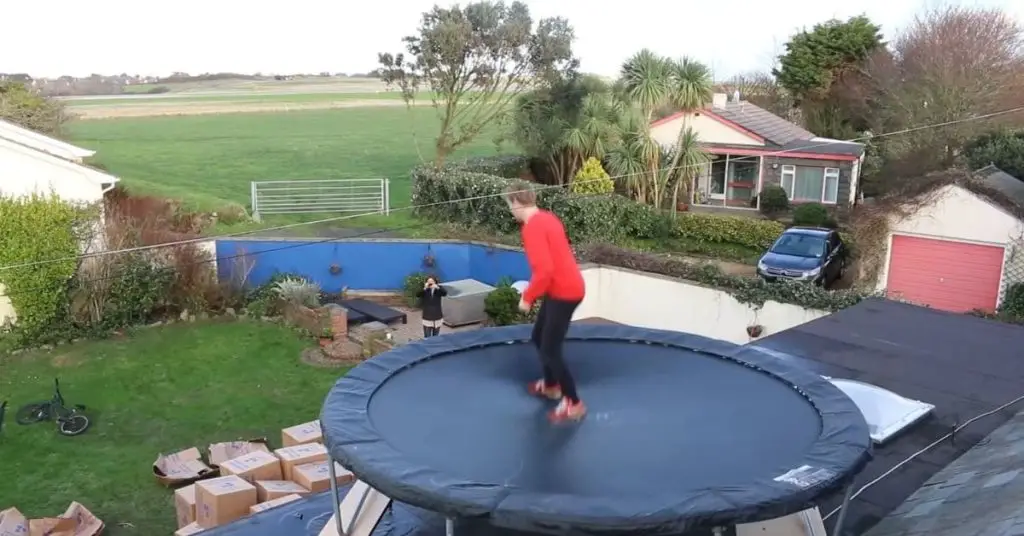
Once you have become comfortable with basic jumps on a trampoline, you can start practicing high jumps.
Begin by gradually increasing the height of your jumps while focusing on how your body feels and maintaining control.
Perform sets of 10 jumps, aiming to jump as high as possible on each jump. It’s important to maintain balance through body control. However, safety is crucial.
If you feel like you’re losing control, your balance is off, or you feel uncomfortable at any point, you should stop. Take a step back and regain confidence and control by doing a few sets of 10 lower jumps before attempting high jumps again.
Maintain Patience and Consistency:
Stay persistent and committed to improving your high jumping skills on a trampoline. It’s normal to face challenges and struggle with control and balance during practice. Remember that even professionals have bad days.
Prioritize safety above all else. If you feel uncomfortable or find it difficult to control your body or maintain balance, take a step back and revisit the basic jumps.
This will help rebuild your confidence and strengthen your muscles, preparing you to tackle high jumping again. Don’t give up, and keep practicing to enhance your skills.
Trampoline Workout Mistakes to Avoid
Here are several mistakes during a trampoline workout:
Bouncing on the Balls of Your Feet:
When jumping, it’s important to use the power from your heels. Bouncing too much on your toes can make you unsteady on the trampoline, which is already not very stable. Instead, try pushing down on the trampoline to get into a squat position.
This will engage your hamstrings and glutes. Then, when you jump, focus on pushing through your heels. This will help you stay balanced and steady.
Avoid Excessive Forward Leaning:
Like experts advise engaging your core while sitting at a desk to improve posture, the same principle applies when you’re on a rebounder trampoline.
Many individuals tend to lean too far forward in their upper body while jumping, which can lead to improper form and potential back pain. To avoid this, it’s crucial to maintain a squat position without excessively leaning forward and keeping a flat back.
To correct this mistake, concentrate on engaging your lower abs and bringing your knees up toward your chest instead of bending your chest down toward your knees.
By actively contracting your lower abdominal muscles, you stabilize your core and maintain a more upright position. This adjustment helps to distribute the impact evenly throughout your body and reduces strain on your back.
By practicing this technique, you promote proper alignment, minimize the risk of injury, and enhance the effectiveness of your rebounder trampoline workout.
Engaging your core and maintaining good form will improve your performance and contribute to a healthier and pain-free trampoline experience.
Emphasize Jumping Downward:
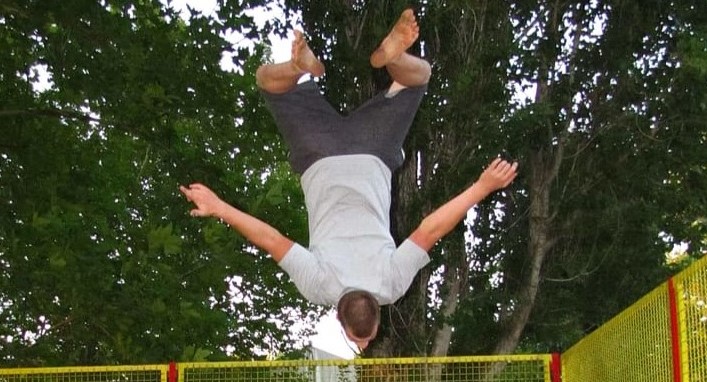
Although it may be exciting to launch yourself into the air while jumping on a trampoline, it’s not the most effective way to engage your muscles.
According to Dong, focusing on jumping downward and maintaining a low position is better.
Doing so will put more effort and activation into your workout. This bouncing type will help you engage your core, glutes, and lower body simultaneously, allowing you to strengthen these areas simultaneously.
Avoid Tightening Your Hip Flexors:
Bouncing on a trampoline is meant to be enjoyable, and maintaining a relaxed state is key, particularly during more challenging movements. A common mistake pointed out by experts is tensing and gripping the hip flexors while performing moves like runs, single knees, and kicks on the trampoline.
To execute these moves correctly, it is important to keep your pelvis in a neutral position, engage your lower abs, and slightly lower your legs. Continuously focus on tightening your lower belly to activate your core effectively.
By consciously engaging your core and lower abs, you allow your upper body to stay relaxed and prevent unnecessary tension in your hip flexors. This improves your overall form and technique and reduces the risk of strain or discomfort in the hip area.
By practicing proper form and maintaining relaxation in your upper body, you can fully enjoy the benefits of bouncing on a trampoline while ensuring a safer and more efficient workout.
Remember to listen to your body, start with basic movements, and gradually progress to more advanced exercises as you build strength and confidence.
How to Jump on a Trampoline Safely?
Jumping on a trampoline can be a fun activity, but it’s important to prioritize safety. Here are some guidelines to follow for safe trampoline jumping:
Proper Assembly and Location Check:
When setting up a new trampoline or reassembling one that has been stored, follow the provided instructions carefully. Additionally, check that all the parts are in good condition and nothing is missing.
Placing the trampoline on a flat surface is essential, avoiding extremely hard ground. Trampolines can move or even get blown away by strong winds during use. To prevent accidents, securely anchor the trampoline to the ground.
Ensure a minimum of 24 feet of overhead clearance above the trampoline and, ideally, at least 6 feet of free space around it. Make sure there are no obstacles underneath the trampoline for safety reasons.
Use Safety Net Opening for Entry:
It is crucial to prioritize safety when entering and exiting the trampoline. Always use the designated opening in the safety net for this purpose, and refrain from climbing over the safety net or attempting to access the trampoline through alternative methods.
By using the provided opening, you can ensure a safe and controlled entry and exit.
An additional safety measure for families with young children is to consider using a ladder. A ladder can assist children in safely climbing onto the trampoline and reduce the risk of accidents when attempting to get on or off the trampoline without proper assistance.
It is important to note that ladders are typically not included with the trampoline and must be purchased separately.
By following these guidelines and using the designated opening in the safety net, along with the possible use of a ladder, you can enhance the safety of trampoline usage and minimize the chances of accidents or injuries occurring.
Emphasizing Safety Net and Edge Protection:
A safety net around the trampoline is essential to prevent jumpers from falling off and getting injured. Sometimes, you can lose your balance while jumping, especially if other people are bouncing at the same time.
It’s important to remember to close the opening in the safety net securely before you start jumping to ensure maximum safety.
Ensuring Trampoline Edge Protection:
Trampoline edge protection serves two main purposes: it protects the springs from moisture and dirt, and it helps prevent accidents. If someone bouncing on the trampoline accidentally loses their balance or jumps towards the side, the edge protection prevents their feet from slipping between the springs. Additionally, the edge protection acts as a shock absorber.
When you purchase a trampoline from Biltema, edge protectors are usually included. However, you can buy them separately if they need to be replaced.
Recalling the Fundamental Rules:
Here are some important guidelines to remember when using a trampoline:
- Jumping Only: The trampoline is designed for jumping purposes only. Do not climb or hang on the safety net; avoid intentionally throwing yourself at it.
- Stay Clear Underneath: Never go underneath the trampoline while someone else is jumping. This is to ensure everyone’s safety.
- Jump Within Your Skill Level: Always jump according to your skill level. Start with simple basic jumps and gradually progress as you become more comfortable and confident.
- Learn Proper Stopping Techniques: It’s essential to stop jumping correctly, especially if the tempo increases too much. This helps maintain control and prevents accidents.
- Footwear and Clothing: You can jump on the trampoline with socks or barefoot. However, removing any excess clothing before jumping is important to avoid getting tangled or hindered during your jumps.
By following these basic rules, you can ensure a safer and more enjoyable trampoline experience.
Jumping Safely in Favourable Weather Conditions:
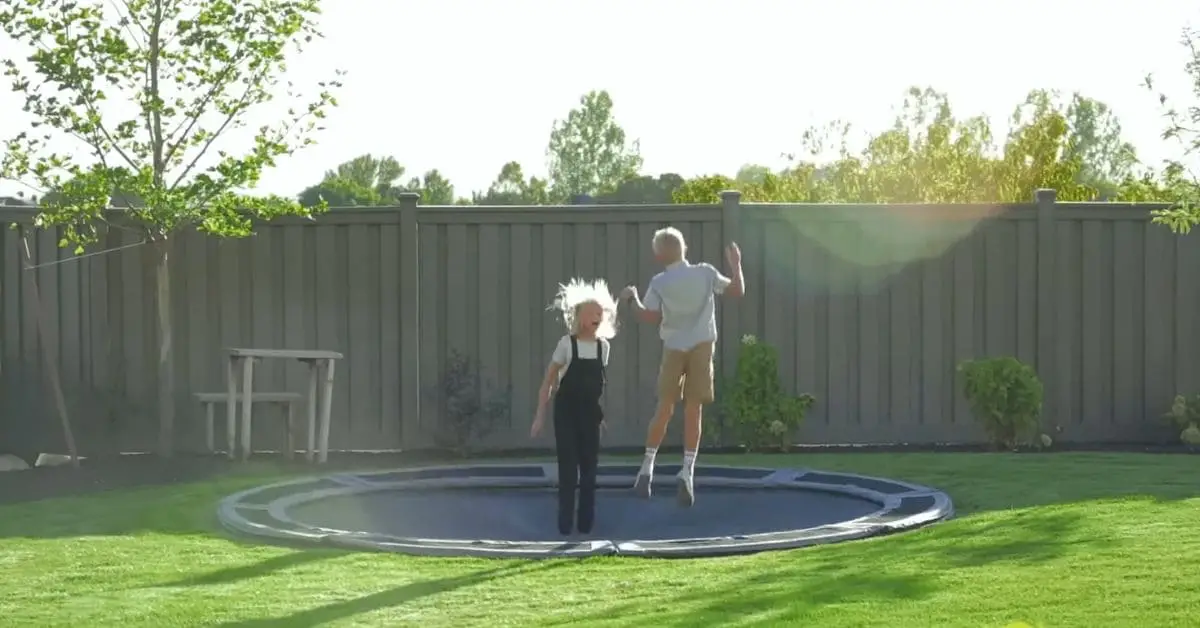
After it rains, the trampoline’s surface can become slippery, making it more dangerous to jump on.
It’s important to wait until the trampoline is completely dry before resuming jumping to reduce the risk of accidents.
You can cover the trampoline with a protective cover to protect it when it’s not in use. This will help keep it dry and prevent water from accumulating, allowing you to start jumping again quickly once the rainy weather has passed.
Using a cover can also help maintain the trampoline’s condition and make your bouncing experience smoother and safer.
Ensuring Single Person Bouncing:
To prevent accidents, it is important to remember that only one person should use the trampoline at a time, even though it may seem less exciting for children. This rule is in place to protect enthusiastic young jumpers from getting accidentally bumped by larger individuals.
Even experienced jumpers can have unexpected collisions, leading to potentially harmful accidents.
If multiple people are wanting to use the trampoline, it’s a good idea to make a fair arrangement. You can create a list where everyone agrees on a specific order and duration for each person’s turn.
While one person bounces, the others can take turns timing them to make it more engaging and interactive for everyone. This way, everyone gets a chance to enjoy the trampoline safely.
Supervised Trampoline Usage:
Lastly, it’s important to remember that the trampoline should not be used as a substitute for proper supervision. An adult should always monitor children while they are jumping.
On a sunny day, you can watch your kids happily play on the trampoline for a few hours. If multiple children are using the trampoline, consider discussing with other parents or caregivers how to share the responsibility of supervising the bouncing children.
As the responsible adult, you must guide the kids on when to take breaks and have a drink. When fatigue sets in, the risk of accidents can increase. To keep children waiting for their turn engaged, you can organize other outdoor activities or games to keep them entertained.
Remember, proper supervision is crucial to ensure the safety and well-being of the children using the trampoline.
Essential Trampoline Equipment
To ensure safety while using a trampoline, it is important to follow these equipment tips:
- Choose a Round Trampoline: Opt for a round-shaped trampoline instead of a rectangular one. Rectangular trampolines tend to provide a higher bounce, which can be more dangerous.
- Install Trampoline Safety Nets: Enclose the trampoline with high-quality safety nets that cover the entire perimeter. This helps prevent users from falling off the trampoline while jumping.
- Use Trampoline Safety Pads: Do not use the trampoline without safety pads that effectively cover the springs, hooks, and frame. These pads absorb shocks and protect against accidental contact with the trampoline’s hard parts.
- Proper Placement: Place the trampoline away from other play areas, buildings, and trees. Ensure that there is ample space around the trampoline to prevent collisions with surrounding objects.
- Soft Landing Surface: Provide a softer landing surface around and underneath the trampoline using materials like sand or wood chips. This helps cushion potential falls and reduces the risk of injury.
- Review Safety Materials: Take the time to carefully read and understand the safety materials included with your trampoline purchase. These materials provide important guidelines and instructions specific to your trampoline model.
By following these equipment guidelines, you can enhance the safety of trampoline usage and minimize the risk of accidents or injuries.
Statistics on Trampoline-Related Injuries
Here are some detailed statistics on trampoline-related injuries to be aware of:
Causes of Injuries:
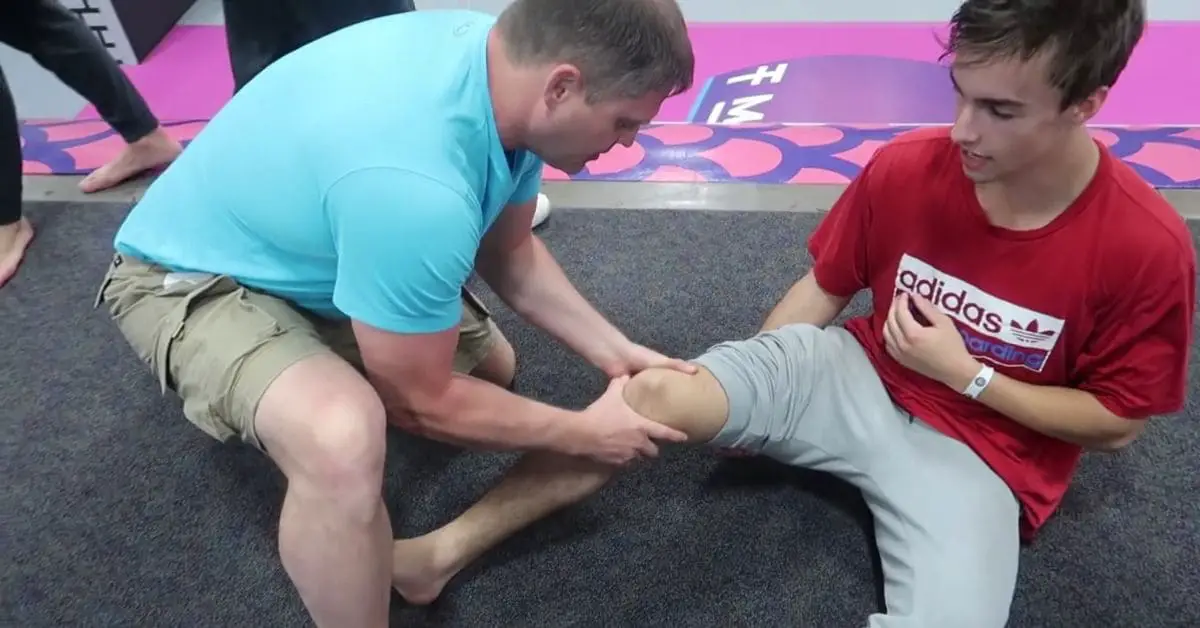
The leading causes of injuries requiring emergency room visits on trampolines are collisions between jumpers, falls from the trampoline, and attempts at performing stunts during jumping.
These activities pose significant risks and can result in accidents and injuries. It is crucial to exercise caution, follow safety guidelines, and avoid engaging in rough play or attempting advanced maneuvers without proper training and supervision.
By being mindful of these risks and taking necessary precautions, such as proper supervision and adhering to trampoline safety guidelines, we can help reduce the occurrence of injuries and promote a safer trampoline experience.
Common Areas of Injury:
Trampoline injuries tend to affect specific body parts, with approximately 40% involving the legs and feet, 29% affecting the arms or hands, 20% impacting the head, face, or neck, and 10% involving the shoulder or trunk region.
It is important to know these statistics to understand the potential risks associated with trampolining.
By being mindful of proper jumping techniques, following safety guidelines, and using protective equipment when necessary, such as helmets and pads, we can help reduce the likelihood of injuries to these vulnerable body areas and ensure a safer trampolining experience.
Annual Injury Count:
Annually, approximately 246,875 trampoline-related injuries in the United States require medical treatment. These injuries range from minor cuts and bruises to more severe fractures or head injuries.
Common causes include collisions with other jumpers, falls from the trampoline, improper landings, and attempts at complex maneuvers without proper skill or supervision.
Body parts commonly affected include the legs, feet, arms, hands, head, face, neck, shoulders, and trunk region. To mitigate the risk, prioritize safety measures such as supervision, following guidelines, maintaining a hazard-free environment, and using protective equipment.
By being mindful and taking precautions, we can reduce the frequency and severity of trampoline injuries for a safer and more enjoyable experience.
Age Group Affected:
Trampoline injuries predominantly affect children, with approximately 75% of incidents involving individuals aged 14 years or younger. This statistic underscores the crucial need for close monitoring of children using trampolines.
Children may be more vulnerable to injuries due to their smaller size, developing coordination, and limited experience in maintaining proper form during jumps.
It is essential for parents, guardians, or responsible adults to actively supervise children on trampolines, ensuring adherence to safety guidelines, providing instruction on appropriate jumping techniques, and intervening to prevent risky behaviors.
By actively monitoring children, we can significantly reduce the risk of trampoline injuries and promote their safety.
Younger Children:
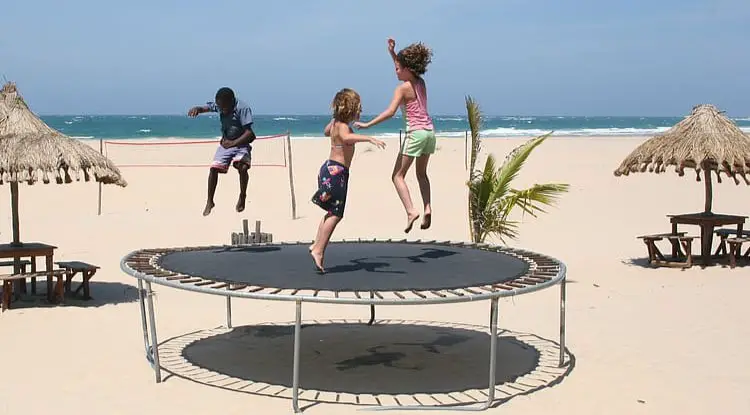
Among the age groups affected, children under 6 accounted for approximately 15% of trampoline injuries treated in hospital emergency rooms.
Younger children may be more vulnerable due to their smaller size and less developed motor skills.
Fatalities:
Unfortunately, improper use of trampolines can lead to fatalities, although such cases are relatively rare. Teenagers, specifically those aged 12 to 19, are most commonly affected by trampoline-related deaths.
The primary causes of these fatalities include falls from the trampoline and landing on the neck while attempting somersaults or other risky maneuvers.
These statistics emphasize the importance of understanding and addressing the potential risks associated with trampoline use.
The incidence of trampoline injuries can be significantly reduced by implementing safety measures, such as proper supervision, adhering to usage guidelines, and promoting responsible jumping practices.
Variations of Jumps
Different Types of Jumps on a Trampoline:
Straight Jumps:
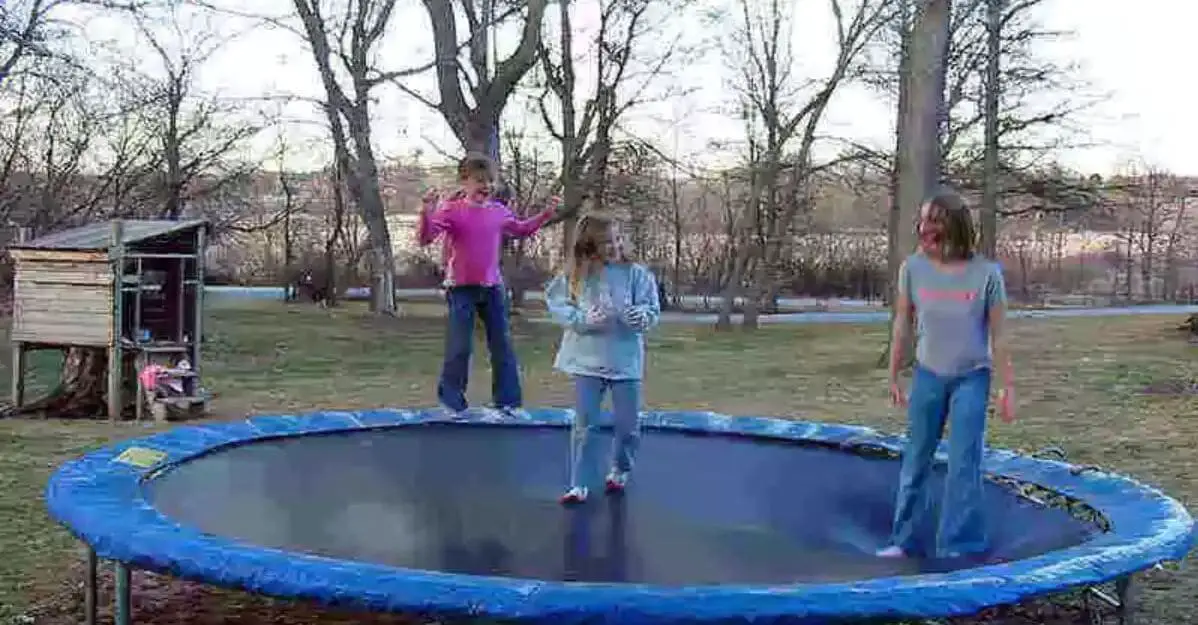
Straight jumps are the basic jumps where you bounce up and down on the trampoline. You can experiment with different heights and intensities by using the elasticity of the trampoline bed.
By pushing off the trampoline surface with your legs, you can vary the height and power of your jumps.
This adds excitement and challenge to your bouncing routine, as you can try to jump higher or achieve a quicker rebound.
Tuck Jumps:
Tuck jumps involve bringing your knees up towards your chest while in mid-air. You tuck your legs and pull your knees in as you jump, creating a compact, tucked position.
This jump adds difficulty and requires core strength and coordination to maintain balance while tucking and landing back on the trampoline. Tuck jumps can help improve your core stability and leg strength.
Pike Jumps:
Pike jumps focus on stretching and flexibility in your lower body. During a pike jump, you keep your legs straight and extended in front of you while in mid-air. This creates a pike position, with your body forming a V shape.
Pike jumps require good hamstring and lower back flexibility. They can help improve your lower body flexibility and strengthen your leg muscles.
Star Jumps:
Star jumps add a fun and dynamic element to your trampoline routine. As you jump, you extend your arms and legs outward, creating a star shape with your body.
This jump engages your entire body, including your arms, legs, and core muscles. Star jumps promote coordination, balance, and overall body strength.
When incorporating these variations of jumps into your trampoline workout, it is essential to prioritize safety. Start with basic jumps and gradually progress to more advanced variations as you become more comfortable and confident.
Remember to always maintain control, land with proper form, and avoid attempting jumps that are beyond your skill level.
Safety Tips
Here are some important safety tips to keep in mind when using a trampoline:
Avoiding Double Bouncing or Overcrowding:
Double bouncing occurs when two people jump simultaneously, resulting in unpredictable and potentially dangerous movements. It’s important to avoid double bouncing and ensure that only one person is on the trampoline.
Additionally, overcrowding the trampoline increases the risk of collisions and accidents, so limiting the number of users at a time is best.
Being Mindful of Others and Maintaining Proper Spacing:
When multiple people use the trampoline, it’s crucial to be aware of others and maintain a safe distance. Give each other enough space to jump without colliding. Avoid jumping too close to the edges or near the springs to minimize the risk of injury.
Avoiding Complicated Flips or Somersaults:
Unless you have received proper training and supervision from a professional, it’s best to avoid attempting complicated flips or somersaults on the trampoline. These moves require advanced skills and can be dangerous without experience and guidance.
Landing with Both Feet:
When landing on the trampoline, aim to land with both feet simultaneously. This helps maintain balance and reduces the impact on your joints and muscles. Landing on one foot or unevenly increases the risk of losing balance and potentially causing an injury.
Following these safety tips will help ensure a safer trampoline experience for everyone involved. Always prioritize safety and use common sense when using a trampoline.
Cooling Down
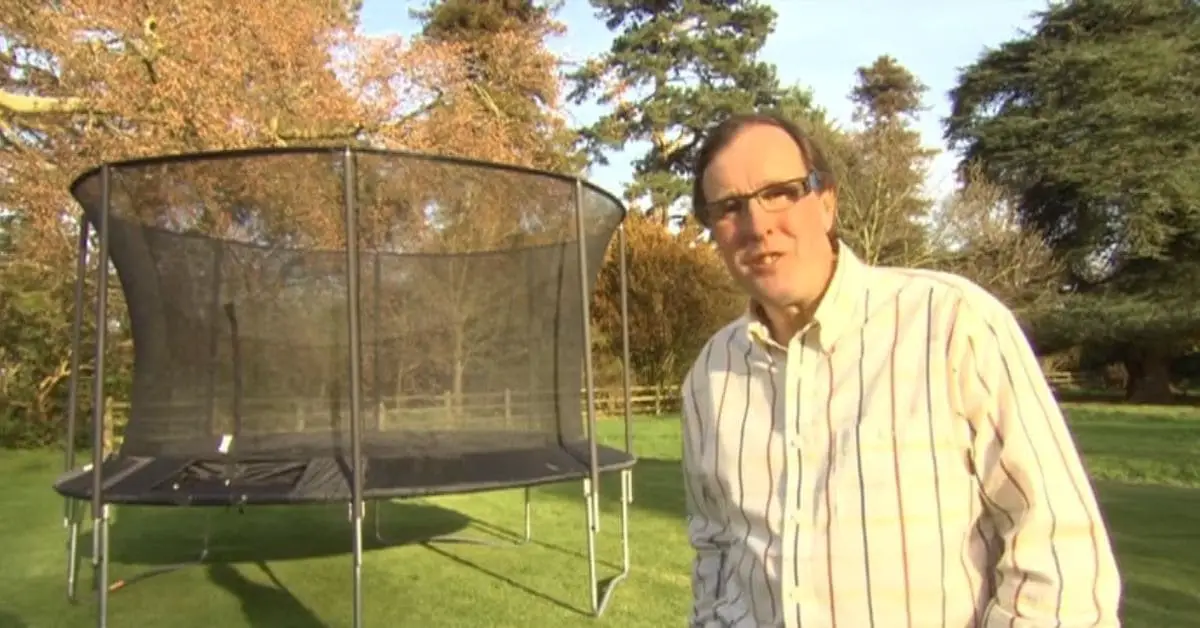
After an exhilarating trampoline session, cooling down properly is important to help your body recover and prevent any post-workout stiffness or soreness.
Cooling down allows your body to transition from intense activity to a resting state gradually. Here are two key steps to include in your cooling down routine:
Gradually Reduce Intensity:
As your trampoline session ends, start by gradually reducing the intensity of your jumps. Instead of performing high-energy jumps, transition to lower jumps with less power.
Slowly decrease the height and intensity of your jumps until you come to a complete stop. This gradual reduction in intensity allows your heart rate and breathing to gradually return to normal, preventing a sudden drop that could leave you lightheaded or dizzy.
Stretch Leg Muscles:
Once you have finished bouncing, take a few minutes to stretch your leg muscles. Focus on stretching your calves, hamstrings, and quadriceps, as these muscles are commonly engaged during trampoline jumping.
Perform gentle static stretches, holding each stretch for 15-30 seconds without bouncing or jerking. You can try exercises like standing calf stretches, hamstring stretches, and quadriceps stretches.
Stretching helps relieve tension in your muscles, promotes flexibility, and reduces the risk of muscle tightness or soreness after the workout.
Remember to listen to your body throughout the cooling down process. Modify the stretches or decrease the intensity if you feel any discomfort or pain. Allow yourself enough time to cool down properly before ending your trampoline session.
Incorporating these cooling-down steps into your routine will give your body a chance to recover effectively and minimize the risk of muscle soreness or injury.
FAQs:
Q:1 How do I start jumping on a trampoline?
To start jumping on a trampoline, position yourself in the center of the mat with your feet shoulder-width apart. Bend your knees slightly, and with a controlled motion, push off the trampoline surface using both feet.
Q:2 How high should I jump on a trampoline?
The height of your jumps can vary depending on your comfort level and skill. Start with small jumps to get a feel for the trampoline’s bounce. As you gain confidence and control, you can gradually increase the height of your jumps, ensuring you maintain balance and land safely.
Q:3 How can I improve my jumping technique on a trampoline?
To improve your jumping technique, focus on using your leg muscles to generate power and momentum. Use controlled movements and engage your core for stability. Practice different jumps, such as tuck jumps or pike jumps, to challenge yourself and enhance your skills.
Q:4 What should I do with my arms while jumping on a trampoline?
While jumping on a trampoline, you can keep your arms by your sides, outstretched for balance, or use them to perform various arm movements. Experiment with different arm positions to find what feels most comfortable and natural.
Q:5 How do I land safely after a jump?
When landing after a jump, aim to land with both feet simultaneously on the trampoline surface. Bend your knees to absorb the impact and maintain balance. Avoid landing with your feet too close or far apart, as this can reduce your balance.
Keep your core engaged and maintain control throughout the landing to prevent any sudden or jarring movements.
Q:6 Is there anything I should avoid while jumping on a trampoline?
While jumping on a trampoline can be fun and exhilarating, it’s important to be mindful of safety to prevent injuries. Here are a few things to avoid:
- Attempting advanced or complicated maneuvers without proper training or supervision.
- Jumping off the trampoline onto other surfaces or objects.
- Jumping too close to the edge of the trampoline can increase the risk of falling off.
- Attempting jumps that are beyond your skill level or physical capabilities.
- Engaging in rough play or colliding with other jumpers on the trampoline.
- It’s also essential to follow any specific safety guidelines or rules provided by the trampoline manufacturer or facility where you’re using the trampoline.
Q:7 Are there any warm-up exercises I should do before jumping on a trampoline?
Doing a warm-up before jumping on a trampoline can help prepare your body for the activity and reduce the risk of injury. Here are a few warm-up exercises you can consider:
- Jumping jacks: Perform a few jacks to get your heart rate up and warm up your leg muscles.
- Leg swings: Stand next to a stable object, swing one leg forward and backward, then sideways. Repeat on the other leg.
- Squats: Perform a few squats to engage your leg muscles and improve flexibility.
- Arm circles: Stand with your feet shoulder-width apart and extend your arms to the sides. Make circular motions with your arms, gradually increasing the size of the circles.
- Neck and shoulder rolls: Gently roll your neck and shoulders in both directions to release tension.
Conclusion:
In conclusion, jumping on a trampoline can be a thrilling and enjoyable activity that provides numerous health benefits, including improved cardiovascular fitness, coordination, and muscle strength. Following a few simple guidelines can enhance your jumping experience and ensure safety.
To start jumping on a trampoline, position yourself in the center, bend your knees, and push off with both feet. Begin with small jumps and gradually increase the height as you gain confidence.
Focus on using your leg muscles and engage your core for stability. Experiment with different arm positions to find what feels most comfortable for you.
When landing, aim to land with both feet simultaneously, keeping your knees bent to absorb the impact. Avoid landing with your feet too close together or too far apart.
Remember to prioritize safety by avoiding advanced maneuvers without proper training, avoiding the trampoline’s edge, and not jumping off the trampoline onto other surfaces. It’s also crucial to warm up before jumping to prepare your body for the activity and reduce the risk of injury.
By incorporating these techniques and safety precautions, you can make the most of your trampoline jumping experience while keeping yourself safe and enjoying its many benefits.
We hope you will be well aware of how to jump on a trampoline after reading this comprehensive article. If you have any questions, feel free to comment below!

